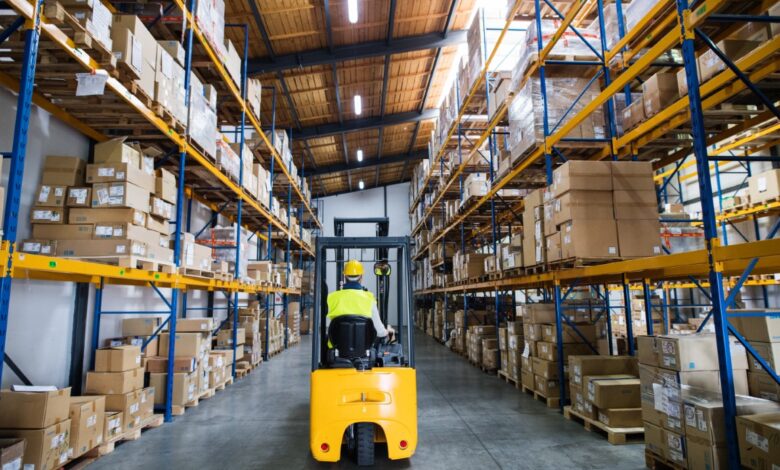How Freight Warehousing and Logistics Work Together to Streamline Operations

In the world of supply chain management, efficiency and organization are key factors that determine the success of a business. The integration of freight warehousing and logistics plays a critical role in streamlining operations, ensuring that products are stored, managed, and delivered effectively. When these two functions work together seamlessly, businesses can reduce costs, improve delivery times, and optimize inventory management. This blog explores how freight warehousing and logistics collaborate to enhance operational efficiency and create a smooth supply chain process.
Understanding Freight Warehousing and Its Role in the Supply Chain
Freight warehousing involves the storage of goods and materials in a facility until they are needed for distribution or sale. Warehouses serve as hubs where products are received, sorted, stored, and eventually shipped out to their final destinations. Warehousing is a crucial part of the supply chain, offering businesses the ability to manage inventory, reduce lead times, and ensure that products are available when needed.
The primary function of freight warehousing is to provide a secure and organized environment where goods can be stored safely and efficiently. This allows businesses to keep their inventory in one central location, making it easier to track stock levels and manage orders. Additionally, warehouses are equipped with specialized systems for handling goods, such as forklifts, conveyors, and inventory management software, all of which contribute to the efficient movement and storage of products.
The Role of Logistics in Streamlining Operations
Logistics is the process of planning, executing, and managing the movement of goods from one point to another. It encompasses various activities, including transportation, shipping, inventory management, and order fulfillment. Effective logistics ensures that products are delivered to the right place at the right time, in the most cost-efficient manner possible.
When paired with warehousing, logistics becomes even more powerful. Logistics teams work closely with warehouses to coordinate the flow of goods, ensuring that products are stored efficiently and delivered on time. This collaboration is essential for businesses that operate in fast-paced industries, where delays or disruptions in the supply chain can lead to lost sales and unhappy customers.
How Freight Warehousing and Logistics Collaborate to Improve Efficiency
The collaboration between freight warehousing and logistics is essential for streamlining operations and ensuring that the supply chain runs smoothly. Here are several ways these two functions work together to enhance efficiency:
1. Optimized Inventory Management
Freight warehousing and logistics work hand-in-hand to optimize inventory management. Warehouses provide a centralized location for storing products, while logistics teams manage the movement of goods in and out of the facility. By coordinating these activities, businesses can keep track of stock levels in real time, ensuring that inventory is replenished as needed and preventing stockouts or overstocking.
An efficient warehousing system uses advanced inventory management software to monitor stock levels, track product movement, and generate reports. This data is then shared with the logistics team, allowing them to plan shipments and deliveries based on current inventory levels. This collaboration ensures that products are always available when needed, reducing the risk of delays in the supply chain.
2. Improved Order Fulfillment and Accuracy
One of the key goals of warehousing and logistics is to ensure that customer orders are fulfilled accurately and on time. By working together, warehouses and logistics teams can streamline the order fulfillment process, from picking and packing to shipping and delivery. This collaboration helps reduce errors, such as incorrect shipments or delays in processing orders.
For example, when an order is received, the warehouse team is responsible for picking the products from storage and preparing them for shipment. The logistics team then arranges transportation to deliver the goods to the customer. By coordinating these efforts, businesses can ensure that orders are fulfilled quickly and accurately, improving customer satisfaction and reducing the risk of returns or disputes.
3. Efficient Transportation and Distribution
Logistics plays a crucial role in managing the transportation of goods from the warehouse to their final destination. Whether it’s local deliveries or long-distance shipping, logistics teams are responsible for selecting the most efficient and cost-effective transportation methods. By collaborating with freight warehousing teams, logistics can optimize the distribution process, ensuring that products are shipped out in a timely and organized manner.
This collaboration allows for the optimization of routes, reducing transportation costs and delivery times. For example, logistics teams can plan shipments to take advantage of consolidated loads, reducing the number of trips and maximizing the use of space in delivery vehicles. This results in cost savings for the business and faster delivery times for customers.
4. Flexibility and Scalability
One of the key advantages of integrating freight warehousing and logistics is the flexibility it provides. Businesses can scale their operations up or down based on demand, without having to worry about storage limitations or logistical bottlenecks. During peak seasons, such as the holidays, warehouses can increase their capacity to store more inventory, while logistics teams can ramp up transportation efforts to handle the increased volume of shipments.
This scalability is essential for businesses that experience fluctuations in demand. By having a flexible warehousing and logistics system in place, businesses can quickly adapt to changing market conditions and ensure that their supply chain continues to operate efficiently.
5. Cost Reduction Through Better Coordination
When warehousing and logistics are coordinated effectively, businesses can reduce operational costs. Efficient inventory management helps minimize the costs associated with overstocking or stockouts, while optimized transportation reduces fuel and labor expenses. By working together, warehouses and logistics teams can identify areas for improvement and implement cost-saving measures, such as consolidating shipments, optimizing storage space, and reducing waste.
Moreover, businesses that use third-party logistics (3PL) providers for warehousing and transportation can benefit from economies of scale. These providers often have access to larger networks of warehouses and transportation options, allowing businesses to reduce costs while maintaining high levels of service.
6. Technology Integration for Greater Visibility
The integration of technology plays a significant role in enhancing the collaboration between warehousing and logistics. Advanced software systems, such as warehouse management systems (WMS) and transportation management systems (TMS), allow businesses to track inventory, monitor shipments, and manage orders in real time.
These systems provide greater visibility into the supply chain, allowing businesses to make data-driven decisions and improve overall efficiency. For example, by using real-time tracking, logistics teams can monitor the status of shipments and adjust routes if necessary, while warehouses can use automated systems to manage inventory and reduce the time it takes to process orders. This technology integration helps streamline operations, reduce errors, and improve overall supply chain performance.
Conclusion: The Power of Collaboration in Streamlining Operations
The collaboration between freight warehousing and logistics is essential for streamlining operations and ensuring that businesses can meet customer demands efficiently and cost-effectively. By working together, warehouses and logistics teams can optimize inventory management, improve order fulfillment, reduce transportation costs, and provide the flexibility needed to adapt to changing market conditions.
As businesses continue to seek ways to improve their supply chain operations, the integration of freight warehousing and logistics will remain a critical factor in achieving success. With the right systems and processes in place, businesses can ensure that their supply chain runs smoothly, delivering products on time and maintaining high levels of customer satisfaction.
Keep an eye for more latest news & updates on Tech Promagazine!





